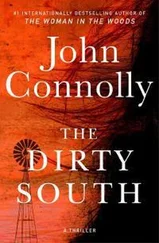Dirty Theory:Troubling Architecture
Hélène Frichot
Contents
Introduction – Dirty Theory: Troubling Architecture
1. A Dirty, Smudged Background
2. Dirt, Noise and Nonsense
3. The Dangers of Purification
4. Dirt and Maintenance
5. Dirty Money
6. Dirty Ditties
7. Theory Slut
8. Dirty Drawings, Dirty Models
9. Dirt and Differentiation
10. Dirt Ball
11. Dirt and Colonisation
Conclusion: Creative Dirt
Acknowledgements
Bibliography
Introduction
Dirty Theory:
Troubling Architecture
There is nothing very respectable about dirty theory. It seeks out approaches and plots trajectories from a position close to the ground. We must move past our disgust, to work with the dirt: This is an imperative for coping with our dusty, dirty, defiled world. To think with it, not against it. Dirt never emerges from nowhere, ex nihilo, but from beneath your feet, from under your fingernails, from encounters and relations and from the accumulated odds and sods that compose any mode of life. A life, where it is not stultified as nature morte, is inevitably dirty, messy, buffeted by contingencies. Theories, ways of actively thinking-with, can be derived from all kinds of sources and situations. The dirty theorist is usually something of an avid collector, accumulating not just the regular set readers – written by the usual theoretical suspects – but pamphlets, brochures, maps and postcards, snatches of conversation and grabs of social media feed, accepting all the while that distinctions between low and high culture are easily undone. (An old lesson we keep forgetting, caught up as we are in a will to purification.) What was once sacred and revered in the next moment may well be expelled as abject, judged to be without sense, useless. The dirty theorist follows the materials, tracks the soiled effluent, observing from where it came and the direction that it appears to be taking. She is unafraid of selecting at will from the sedimented archive of thinking.
Dirty theory messes with mixed disciplines. Showing up in ethnography, in geography, in philosophy, it can just as well find a home in architecture, design and the creative arts. Dirt and art have an existing long-term relationship, whether rendered as negative sculptures extracted from the earth, or maintenance manifestos or soil re-valued as currency. Dirt and architecture – beyond the uptight habits of the archetypal heroic architect’s will to purification and hygiene – admits sly allegiances here and there. David Adjaye’s Dirty House dabbles in dirt, but better still, Katherine Shonfield’s transient installations dig deeper and Jennifer Bloomer’s dirty ditties and dirty drawings conspire to imagine architecture otherwise. Dirty theory helps architecture think about the ordinary gestures of care, repair and maintenance that can form part of its mandate. Most powerfully, following the dirt can be a creative movement, a profound relationship with our local environment-worlds.
Dirty theory is wary of the strictures of disciplination, preferring instead indisciplination, a wayward approach to problems. It’s scattergun, if not scatological. Dirty theory appropriates and critically, knowingly, misappropriates, because ideas do not belong to singular authors, the dirty theorist avers. Dirty theory, the dirty theorist and the theory slut herself are not very respectable, rational or reasonable figures. The preferred approach here is one of a “groping experimentation” (Deleuze & Guattari 1994, 41), to quote that still disreputable pair, Gilles Deleuze and Félix Guattari. Groping the world, prehending it, trying not to grasp it too hard. To be respectable means to have accepted and internalised the status quo, where everything and everyone is agreeable and none are prepared to rock the boat. To rock the boat would be to place oneself at risk of being thrown overboard, only to discover that the mythical island of reason has disappeared into the mists. To be rational assumes that reason has been determined in advance, and that everything can be organised in good measure. To be reasonable, well, it means you are prepared to get along and are certainly not a woman who makes a fuss. The reason that supports the reasonable (“be reasonable now!”) assumes that each thing has its proper, measured and assigned, place. Once a title on the lands belonging to reason has been secured, and “a solid foundation to build upon” (Kant 1979, 180) has been established, why should we not be contented? Why venture further? Beyond the island of truth, as Immanuel Kant has famously expounded, we only risk venturing further into the fogs of illusion. Yet islands, in this age of concatenating global climatic crises, rising sea levels, micro-plastics and pollutants, turn out to be not so secure after all. Island, land, dirt, all proffering opportunities for the cultivation of reason:There is more than a whiff of the colonial impulse in this territorialisation of dirt. Pure reason must be muddied. Dirty theory thus has additional labour in the political project of decolonisation, and even in the decolonisation of the otherwise too clean imaginary. Dirty theory demands that other voices be heard.
The dirt, the earth, is the required ground in which concepts can be planted and eventually bloom as flowers or weeds (either way). Dirty theory, you see, is neither good nor bad per se; like flowers or weeds it depends on the situation, the relations at hand, on what comes together to form a greater or a meaner composition. The dirt may not be sufficient for anything at all to grow. To territorialise, to deterritorialise, to reterritorialise – all such movements depend on the dirt rendered as the earth, la terre, beneath your feet, between your fingers, in your mouth as you utter a furious expletive. Without these movements-utterances, not much would be achieved, for good or for bad, and you are bound to get dirty either way.
It is the anthropologist Mary Douglas who famously offers the neatest definition of dirt: Dirt is matter out of place (Douglas 1966, 36). Matter located where it is judged not to belong. Judged as such by someone, or rather, judged by some societal context organised around societal norms and structures. Douglas explains that this simple formula directs us toward order and then the contravention of ordered relations. Dirt is that which crosses boundaries, challenges decorum, contravenes norms. The low, the reduced, the underfoot, the despised, the rejected, the expelled are at the same moment the accumulated ground upon which the powerful steady themselves in order to reach rarefied heights. Dirt carries material and conceptual weight, it is part of the stuff of all manner of corporeal relation, and it is also symbolic. Dirt registers the conjunction of the material semiotic. It invokes unholy mixtures of concepts and materials, of words and what matters. Jennifer Bloomer puts it plainly: “The world and the language are all tangled around each other” (1993, 87). The tangle should be read as a growing vine, a process of entanglement, as of that emerging from the mouth of the young woman in Botticelli’s painting Primavera [Spring] (1478); either she is choking on, or else she is vomiting up, growing life.
If it is Douglas who represents dirt for the ethnographers, then it is the architectural thinker-doer Jennifer Bloomer who best represents dirt for the architects. She represents it in such a way as to steal it from the grasp of the would-be phenomenologists, and those who would wax lyrical about dirt as an elevated outcome of weathering (Mostafavi & Leatherbarrow 1993), or celebrate the aesthetic effects of dust or seek a metaphysics of the imperfect and impure. Much like violence when violence exudes a curious fascination in its beholder, dirt is ever at risk of aestheticisation. Despite this risk, cannot a dirty theory enable creative possibilities beyond mere aestheticisation – creative possibilities that can make a critical difference where it matters? Bloomer, I believe, can help show the way.
Читать дальше












